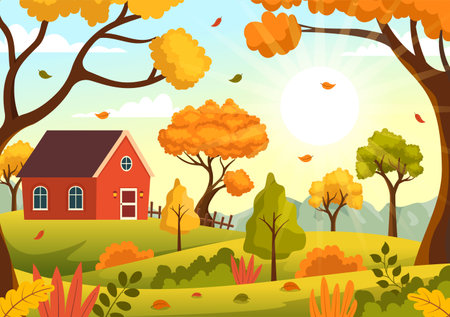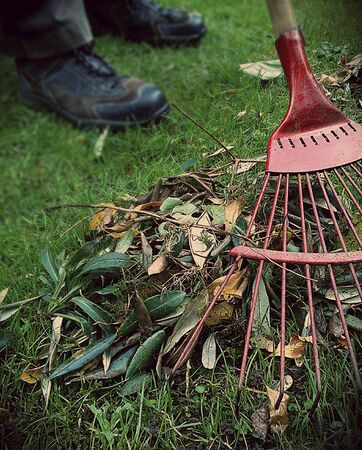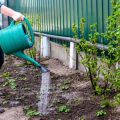1. Evaluate Your Garden Space and Soil Conditions
Before planting your fall garden, take time to assess your current garden setup. Fall crops have different needs than summer vegetables, so understanding your space and soil conditions is key to a productive harvest.
Check Your Garden Layout
Start by looking at how your garden is currently arranged. Are there areas where summer plants are finishing up? You can use these spaces for fall crops like kale, carrots, or broccoli. Think about crop rotation too—don’t plant the same type of vegetable in the same spot as last season to avoid pest and disease buildup.
Evaluate Sunlight Exposure
Fall days are shorter, so its important to choose spots in your garden that get at least 6 hours of direct sunlight per day. Observe your yard throughout the day to see which areas receive enough light. If trees or buildings cast long shadows, you might need to shift your planting area.
Test and Improve Your Soil
Healthy soil is crucial for a successful fall harvest. Conducting a soil test will help you understand the pH level and nutrient content of your soil. You can purchase an easy-to-use home testing kit from a local garden center or send a sample to your local cooperative extension office for more detailed results.
Soil Test Key Factors
| Factor | Ideal Range for Fall Crops |
|---|---|
| pH Level | 6.0 – 7.0 |
| Nitrogen (N) | Medium to High |
| Phosphorus (P) | Medium |
| Potassium (K) | Medium to High |
Add Soil Amendments as Needed
If your soil test reveals any deficiencies, now is the time to fix them. For example:
- Add compost to improve overall fertility and structure.
- Lime can raise pH if your soil is too acidic.
- Sulfur can lower pH if it’s too alkaline.
- Add balanced organic fertilizers to address nutrient gaps.
By evaluating your garden space and preparing your soil properly, you’ll create a strong foundation for healthy, productive fall crops.
2. Choose the Right Fall Crops for Your Region
Picking the right vegetables for your fall garden starts with understanding your USDA hardiness zone. This helps you know which cool-season crops will grow best in your area and when to plant them before the first frost hits. Most fall vegetables prefer cooler weather and can even handle a light frost, making them perfect for harvesting in late fall.
Selecting Cool-Season Vegetables
Cool-season crops are plants that grow best when temperatures drop. These include leafy greens, root vegetables, and some brassicas. They tend to be hardy and can survive chilly nights. Here are some popular choices:
| Vegetable | Ideal USDA Zones | Days to Maturity | Frost Tolerance |
|---|---|---|---|
| Kale | 3–10 | 55–75 days | High |
| Broccoli | 3–9 | 60–100 days | Moderate |
| Carrots | 3–10 | 70–80 days | High |
| Spinach | 3–9 | 40–50 days | High |
Know Your First Frost Date
Your local first frost date is key to planning your fall planting schedule. You want your crops to mature before or just after this date, depending on their frost tolerance. Count backward from your expected first frost date based on the “days to maturity” listed on your seed packets.
How to Find Your First Frost Date:
- Visit the USDA Plant Hardiness Zone Map online.
- Enter your ZIP code to find your zone and average first frost date.
- Create a planting calendar based on that information.
Tips for Success:
- Sow seeds earlier than you think: Soil is still warm in late summer, which helps with germination.
- Add mulch: It helps regulate soil temperature and retain moisture.
- Select quick-maturing varieties: Especially important if youre short on time before frost sets in.
Selecting the right crops and timing your planting around your local climate will set you up for a delicious and productive fall harvest season.

3. Start Seeds Indoors or Direct Sow
Getting a jump on your fall garden starts with knowing when and where to plant your seeds. Depending on the type of vegetables youre growing and how much time you have before your first frost, youll need to decide whether its best to start seeds indoors or sow them directly into your garden beds.
Indoor Seed Starting
Starting seeds indoors is a great way to extend your growing season, especially for crops that need a longer time to mature. Use seed trays or small containers filled with quality seed-starting mix, and place them under grow lights or near a sunny window. This method gives your plants a head start while outdoor temperatures are still too hot or unpredictable for germination.
Benefits of Starting Seeds Indoors:
- More control over temperature and light conditions
- Protection from pests and harsh weather
- Earlier harvests due to advanced growth
Direct Sowing in the Garden
Some crops do better when sown directly into the soil, especially fast-growing vegetables like radishes, spinach, and lettuce. Make sure your soil is well-prepared—loose, moist, and weed-free—before planting. Follow seed packet instructions for proper depth and spacing.
Tips for Successful Direct Sowing:
- Water the soil before planting to help seeds settle in
- Mark rows clearly so you remember where youve planted
- Thin seedlings as they grow to avoid overcrowding
Which Method Should You Choose?
The decision often depends on the crop and your local climate. Heres a quick guide to help you figure out which method works best for common fall vegetables:
| Vegetable | Start Indoors | Direct Sow |
|---|---|---|
| Broccoli | ✔️ | |
| Kale | ✔️ | ✔️ |
| Lettuce | ✔️ | |
| Spinach | ✔️ | |
| Cabbage | ✔️ | |
| Carrots | ✔️ |
By choosing the right method for each crop and giving your seeds the best possible start, youll set yourself up for a bountiful fall harvest.
4. Prep Your Garden Beds and Use Season Extenders
Before planting your fall crops, its important to clean up your garden beds and make sure the soil is ready to support a new round of growth. Start by removing any leftover summer crops that have stopped producing, as well as any weeds that could compete with your fall vegetables for nutrients and space.
Clear Out Summer Plants and Weeds
Old tomato vines, spent cucumber plants, and other summer leftovers should be pulled out and composted if theyre disease-free. Also, remove any invasive weeds to prevent them from going to seed and causing problems next season.
Enrich the Soil
Once the beds are cleared, give your soil a nutrient boost. Fall crops need rich, fertile soil to thrive. Add compost or an organic fertilizer to replenish what was used up during the summer growing season.
Recommended Soil Additives
| Soil Amendment | Benefits | Application Tips |
|---|---|---|
| Compost | Improves soil structure and adds nutrients | Mix 1–2 inches into the top 6 inches of soil |
| Organic Fertilizer | Provides targeted nutrients for plant growth | Follow package instructions for dosage based on crop type |
Use Season Extenders to Protect Your Crops
As the weather begins to cool, some fall crops may need extra protection from frost or unexpected cold snaps. Season extenders help create a microclimate around your plants, keeping them warmer and extending their growing time.
Types of Season Extenders
| Tool | Description | Best For |
|---|---|---|
| Row Covers | Lightweight fabric that shields plants from frost while allowing light and moisture through | Lettuce, spinach, radishes |
| Cold Frames | Mini greenhouses made with a clear lid that traps heat during the day | Kale, carrots, beets |
| Hoop Houses | Tunnel-like structures made from plastic over hoops; great for larger garden beds | Cabbage, broccoli, Swiss chard |
A little preparation goes a long way when it comes to a successful fall harvest. By cleaning out your summer crops, enriching your soil, and setting up protective structures, you’ll give your fall garden the best possible start.
5. Establish a Watering and Maintenance Routine
As your fall garden starts to grow, keeping up with a steady watering and maintenance schedule is key to ensuring a healthy and productive harvest. Fall weather can be unpredictable—some days may still feel like summer while others bring cooler temperatures. That’s why it’s important to adjust your garden care based on the changing conditions.
Maintain Consistent Moisture Levels
Plants need regular moisture to thrive, but overwatering can lead to root rot, especially in cooler fall temperatures when evaporation slows down. Aim for deep, infrequent watering rather than light daily sprinkling. This encourages roots to grow deeper into the soil, making plants more resilient to cold snaps and dry spells.
Watering Tips by Plant Type:
| Plant Type | Watering Frequency | Notes |
|---|---|---|
| Leafy Greens (lettuce, spinach) | 2–3 times per week | Keep soil consistently moist but not soggy |
| Root Vegetables (carrots, beets) | 1–2 times per week | Ensure deep watering to reach root zone |
| Brassicas (broccoli, cabbage) | 2 times per week | Avoid wetting leaves to reduce risk of mildew |
Watch for Pests That Stick Around in Fall
Just because summer is over doesn’t mean pests have disappeared. In fact, some insects become even more active in the cooler months as they search for food before winter. Keep an eye out for aphids, cabbage worms, and slugs—especially on leafy greens and brassicas.
Pest Control Checklist:
- Inspect plants weekly: Look under leaves and along stems.
- Use row covers: Protect crops from flying insects like moths that lay eggs.
- Add diatomaceous earth: Sprinkle around plant bases to deter crawling pests.
- Introduce beneficial insects: Ladybugs and lacewings can help control pest populations naturally.
Be Frost Aware
Certain areas of the U.S. start experiencing early frosts as soon as late September or early October. Checking your local frost dates helps you plan ahead. Even hardy fall crops can suffer if hit by an unexpected freeze.
Frost Protection Tips:
- Monitor nightly temperatures: Use a weather app or garden thermometer.
- Add mulch: Helps insulate root systems and retain warmth.
- Use frost cloths or old sheets: Cover plants overnight when frost is predicted.
- Create mini hoop houses: Great for protecting rows of vegetables from sudden cold snaps.
A thoughtful watering and maintenance routine keeps your fall garden thriving through seasonal changes. With the right care, you’ll set yourself up for a bountiful harvest even as the days grow shorter and cooler.


